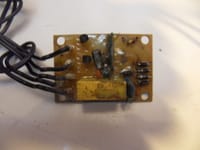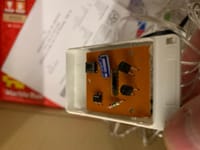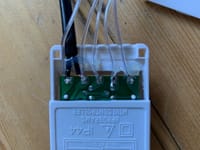In the bad of days fairy lights were a string of incandescent bulbs in series driven straight from mains. So one end of the string was at live mains levels presenting a hazard, but mitigated by reasonable thick insulation on the wires.
Now we have LEDs strings running usually at around 30 V so theoretically safe. However do many of the drivers actually provide real isolation from mains? Attached is a pic of a couple of drivers. Usually there is an X2 capacitor in there to drop the voltage but its only for driving the electronics of the flashes/sequencer I think and not the LEDs. Presumably the 30V is just generated by PWM on the mains so the LED could be at live mains potential after all, especially if the transistors/triacs short.
So the thinner insulation usually used on LED lights is not actually providing full protection methinks if say a wire frays and exposes the copper.
The new driver pictured is truly awful and we reported it to trading standards. No X2 cap, very thin insulation and no fuse in the 13A pug.





